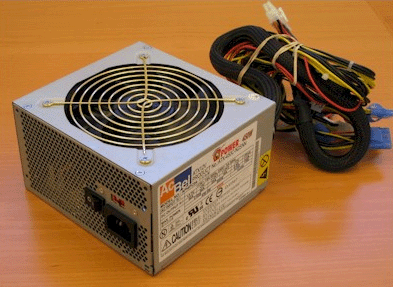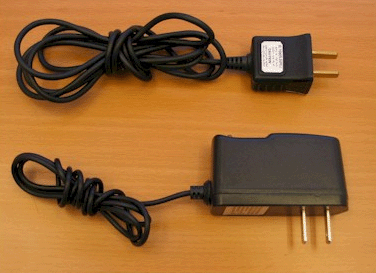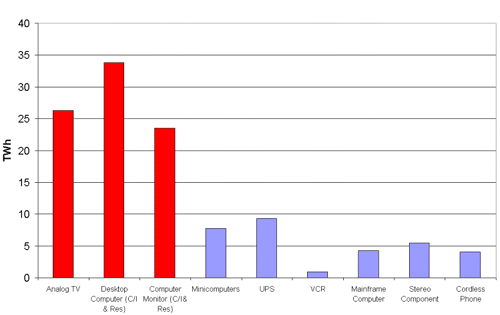Energy Savings Opportunity by Increasing Power Supply Efficiency
Nearly 2.5 billion electrical products containing power supplies are currently in use in the United States, and about 400 to 500 million new power supplies (linear and switching) are sold in the U.S. each year. The total amount of electricity that flows through these power supplies is more than 207 billion kWh/year, or about 6% of the national electric bill. More efficient designs could save an expected 15 to 20% of that energy. Savings of 32 billion kWh/year would cut the annual national energy bill by $2.5 billion, displace the power output of seven large power plants, and reduce carbon dioxide emissions by more than 24 million tons per year.
Power supplies can be located within the devices they are intended to power (internal) or outside of the product in a separate housing (external). Typical applications that have an external power supply include cordless phones and answering machines, video games, computer speakers, and cordless tools. The products are often referred to as “wall packs,” “bricks,” or “transformers.” Most external power supplies are linear power supplies with efficiencies in the range of 30% to 40%.
Typical application of internal power supplies are in personal computer, servers, televisions, monitors, and a wide range of electronic appliances. Most internal power supplies currently in the market are switch-mode power supplies, which have efficiencies in the range of 65% to 70%. Figure 1 shows some external power supplies and an internal power supply used in a personal computer.


Figure 1: Internal and External Power Supplies
The tremendous growth rate of electronic appliances suggests that the power supplies will be pervasive all over the world, constituting a major load segment. Therefore, the efficiency of power supplies will be of critical importance in achieving a sustainable global growth of the digital economy with minimal environmental impact. As power electronics-controlled motor drives start proliferating in other appliances such as air conditioners, heat pumps, refrigerators, washing machines, and dishwashers, the importance of a highly efficient AC-to-DC conversion process will be become even more critical.
Power Supply Operating Modes
There are several operating modes of an appliance that impact the power supply loading. These are:
- Active mode: Full operational state (usually not 100% of rated load, though).
- Sleep mode: A lower power state than active mode during which a product can respond to input or “wake up.”
- Standby mode: The user thinks that the product is “off,” but it may still be drawing some electrical power.
- Hard “off” mode: A switch allows power to be interrupted in front of power supply, causing zero power consumption.
Energy Efficiency of Sleep Mode and Standby (OFF) Mode
In 1996, the U.S. Environmental Protection Agency (EPA) partnered with the U.S. Department of Energy (DOE) to promote the Energy Star label, the purpose of which is to reduce carbon dioxide emissions by increasing energy efficiency. Efforts to improve the energy efficiency of power supplies have primarily focused on mandating sleep modes for appliances such as computers, printers, fax machines, and other office equipment. Energy Star has expanded to cover new homes, most of the building sectors, residential heating and cooling equipment, major appliances, lighting, and consumer electronics.
In addition to requiring an automated sleep mode, efforts of the EPA and DOE to reduce standby power consumption have received considerable attention in recent years. Extensive testing of individual appliances by Lawrence Berkeley National Laboratory (LBNL) [1] and other organizations around the world suggests that appliances in standby mode now consume approximately 5% of residential electricity, corresponding to 50 watts per home. The International Energy Agency (IEA) is actively engaged in developing global standards for appliance standby power.
Energy Efficiency of Active (ON) Mode
While tremendous research activities are going on to reduce power consumption in the standby mode to one watt, very little attention has been paid to reducing the losses in the active (ON) mode of operation. Power usage during active state can be a significant portion of the total energy consumption during the life cycle of a product. Figure 2 shows an initial estimate of total power consumption in active mode by different appliances using power supplies.

Figure 2: Total Energy Usage in Active Mode (TWh/Year) [2]
There is a tremendous potential for energy savings by improving active-mode efficiency. Preliminary estimates show that If all linear power supplies were improved from about 30% efficiency to 80% and if all switching power supplies were improved from about 70% efficiency to 80%, annual savings would be more than 1% of the total U.S. electricity use–about 32 billion kWh and more than $2.5 billion in lower energy bills [3].
California Energy Commission (CEC) Power Supplies Efficiency Improvement Project
Realizing this tremendous potential of energy savings in power supplies in the active mode, the CEC PIER Program has embarked on a multi-year initiative on improving active-mode efficiency of power supplies. This initiative, managed by The Electricity Innovation Institute (E2I) will focus on energy use in the active mode and will address both external and internal power supplies.
The goals of this project are to:
- Assess the state of current power supply technology.
- Understand the market dynamics.
- Work with industry and users to develop and apply high-efficiency power supplies.
- Develop an action plan to transform the power supply market to improve efficiency in all operating modes.
Initial work in this project is focusing on obtaining a baseline efficiency of existing products in the market and to launch a design competition to identify improvements that can be made on active-mode power supply efficiency using existing technologies.
With advancements in every facet of electronic equipment, it is hard to believe that the power supplies used in today’s high-tech equipment are still the relics of the past with room for 20 to 40% improvement in efficiency. Considering the widespread use of power supplies and the opportunity for energy savings in power supplies, E2I and CEC would like to start the initiative and leverage public and private funding to make improvements in power supply efficiency one of the cornerstones of its energy-efficiency measures.
References
1. http://standby.lbl.gov/ This website presents information on standby power and technologies to reduce it.
2. Power Supply Energy Efficiency: Challenges and Opportunities, Chris Calwell, Ecos Consulting, Presentation to PSMA, March 11, 2002 (available from EPA Energy Star Website)
3. Power Supplies: A Hidden Opportunity for Energy Savings, a Natural Resource Defense Council (NRDC) report prepared by Ecos Consulting, May 22, 2002 (available from EPA Energy Star Website)
